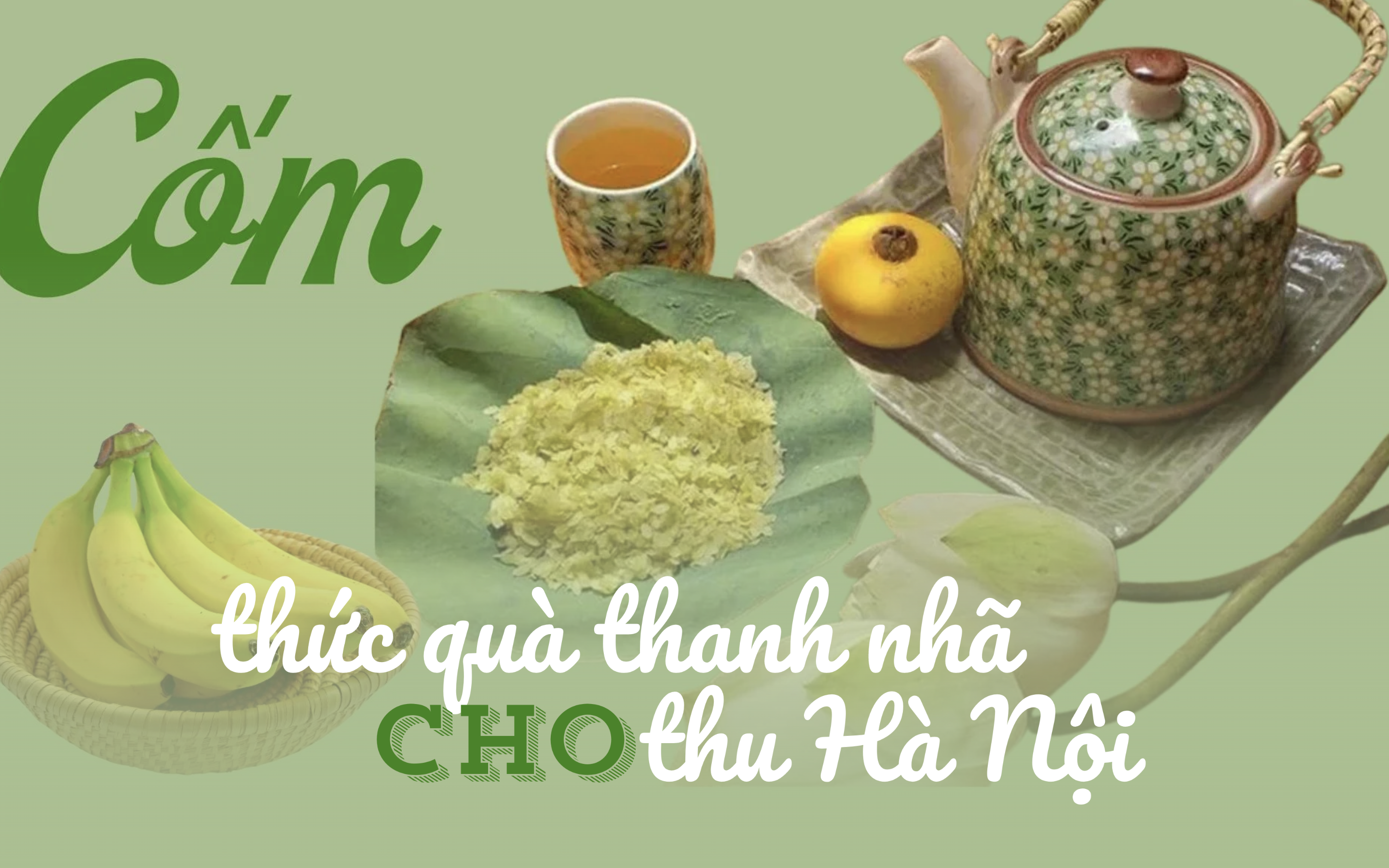
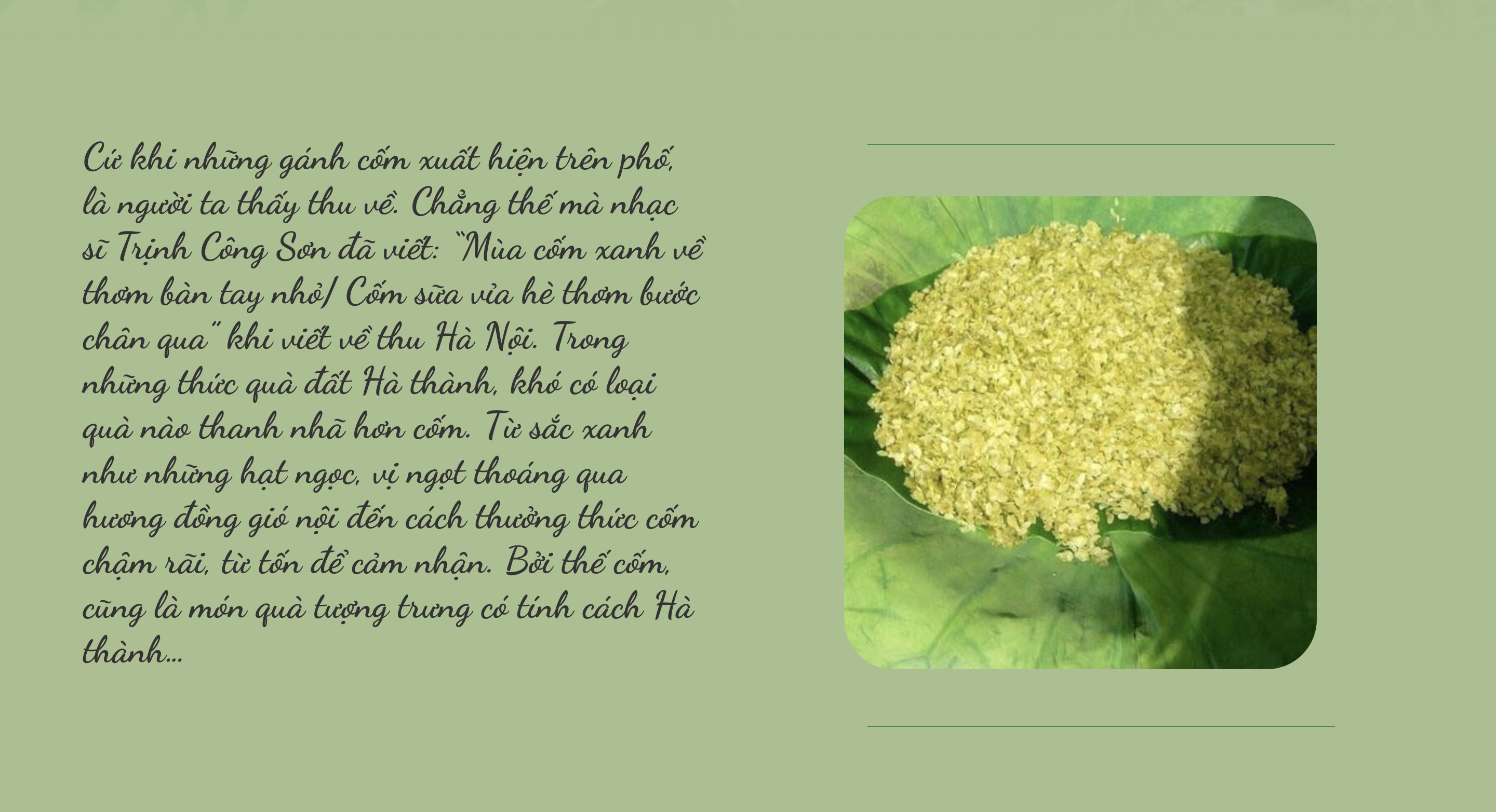
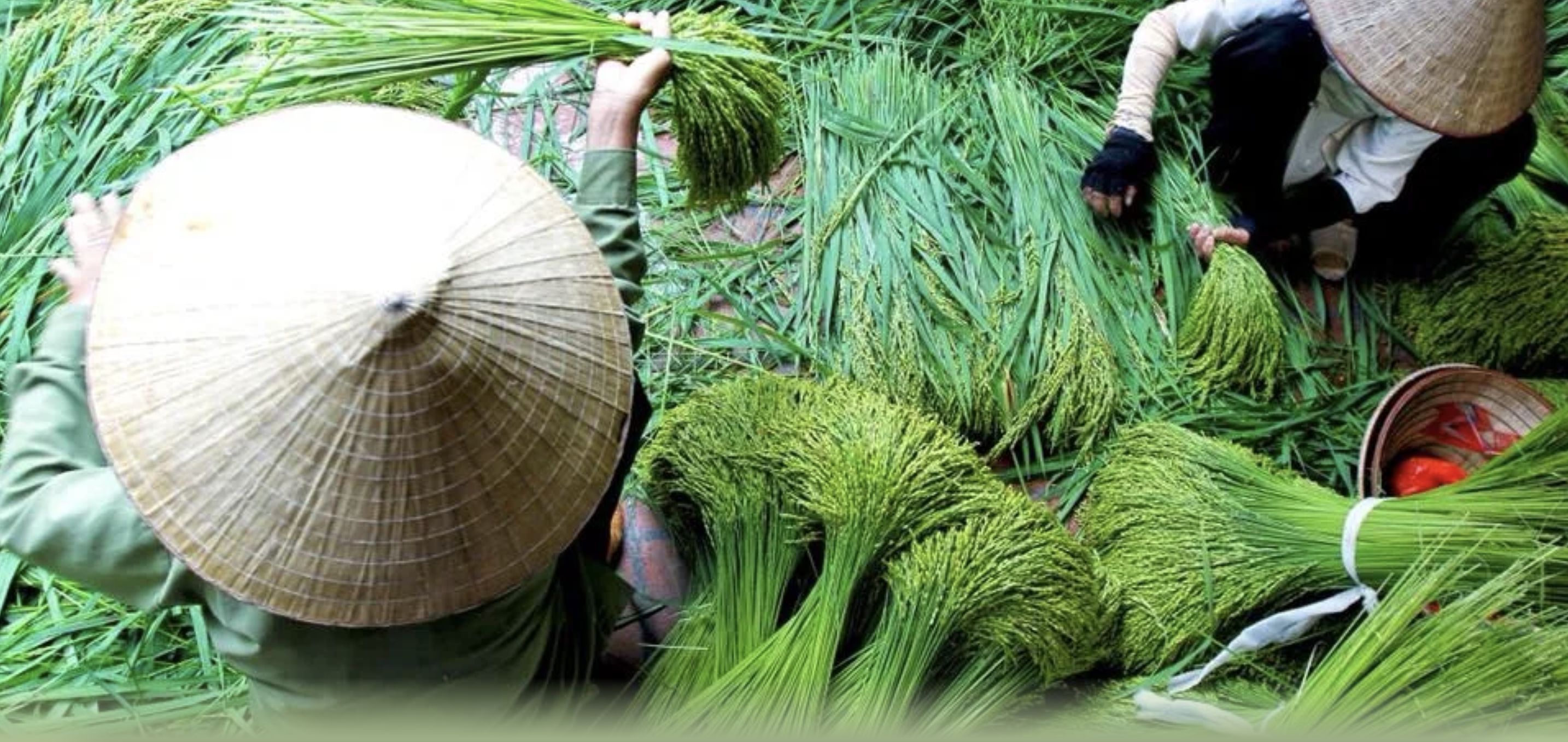
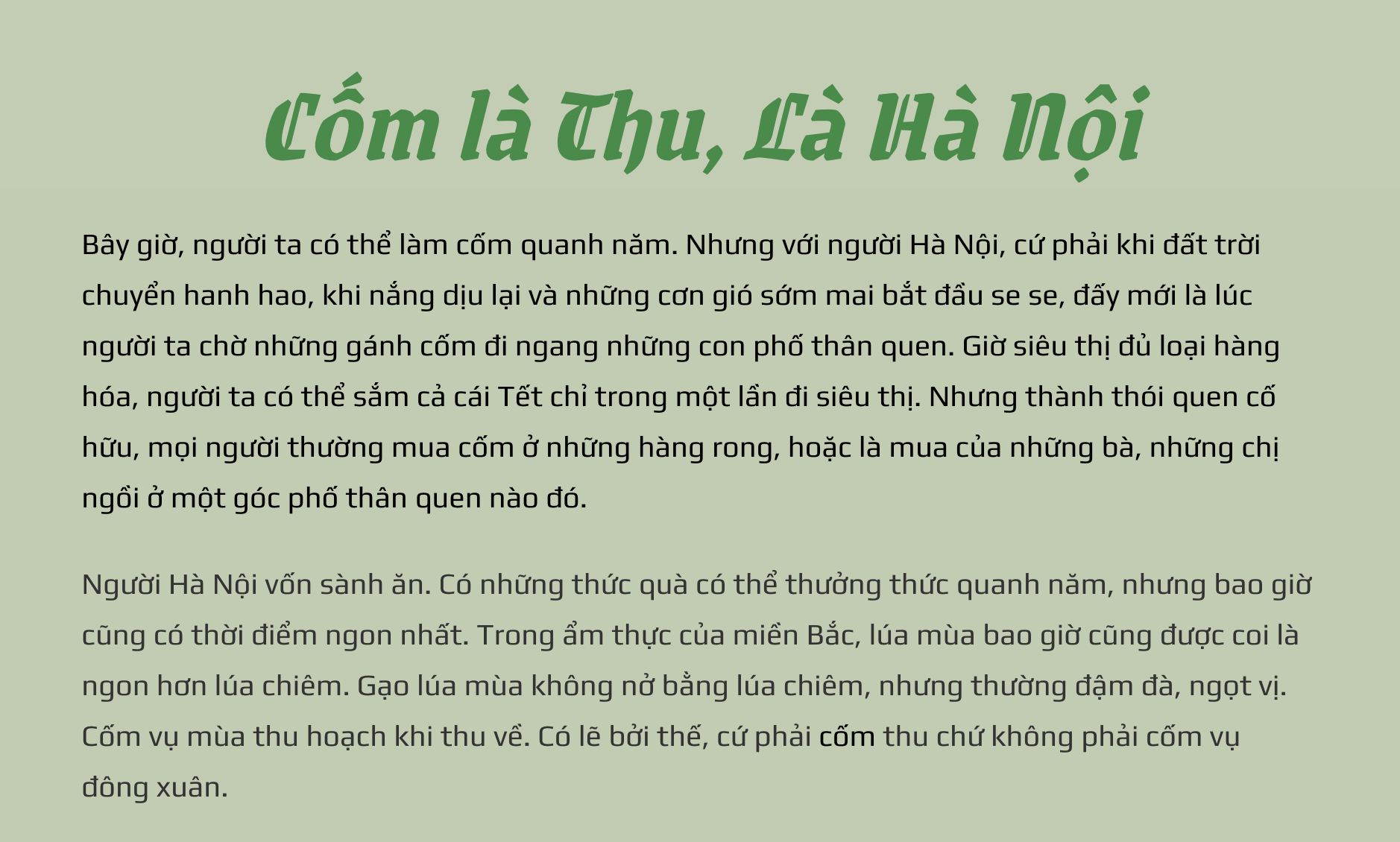
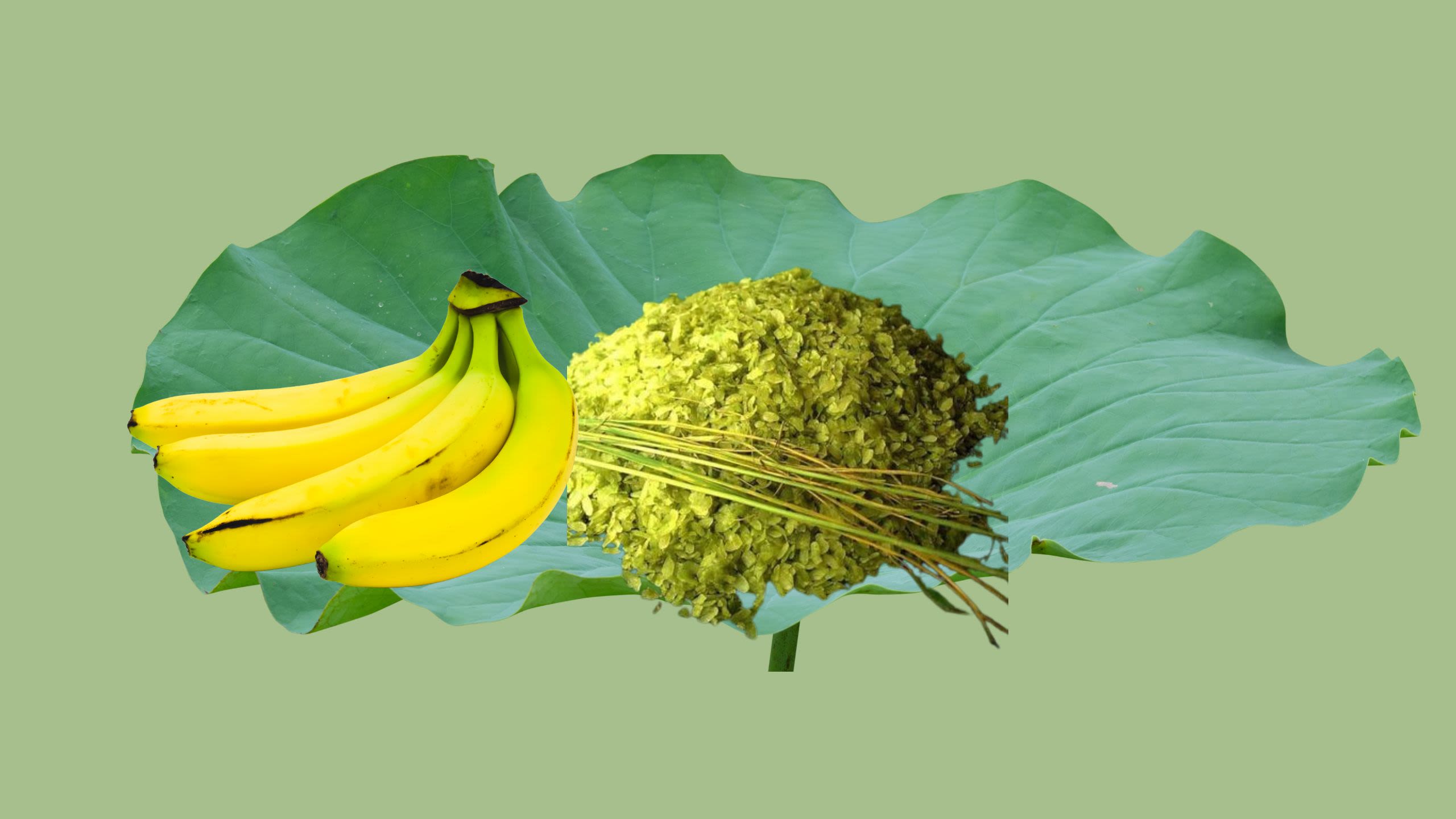
But perhaps, the taste of green rice is better because it “meets” other gifts, also during this autumn. Hanoians have the habit of enjoying bananas with green rice. Bananas bear fruit all year round, but only in autumn do bananas taste the best. And at this time, the bananas are fully ripe, with a yellow color dotted with black spots, which is the cuoc egg banana. Eat bananas with young green rice, when chewing, the banana and green rice blend together, melting in your mouth. Also in autumn, there are persimmons, which together with green rice create new flavors.
Although there are many different ways to enjoy it, many people still prefer “plain” green rice, which means enjoying green rice without other fruits. Green rice is usually wrapped in a lotus leaf, sometimes in a taro leaf tied with a piece of sticky rice straw. Holding the green rice package in your hand, you can smell the faint scent of sticky rice straw, and the faint scent of the lotus leaf. Opening the green rice package, the green green rice grains give off a gentle aroma mixed with other aromas, making people not only enjoy it with their taste buds, but also feel like a gift wrapped with the scent of the countryside inside.

Green rice flakes are a fruit that is only for “fun”. Gently use three fingers to pick up a little green rice flakes and put them in your mouth. The aroma and taste of green rice flakes are all elegant and gentle. You have to chew slowly and leisurely to clearly feel the sweet aroma of young rice grains that have gone through so much effort to become the finished product.
Hanoians are elegant in their cuisine, from preparation to enjoyment. Com is autumn, com is a miniature image of the sophistication in Hanoi culture, that is why. Com wrapped in lotus leaves, displayed with persimmons, bananas… creates an attractive feeling for both taste and sight.

The way to enjoy green rice flakes is elaborate and the process of making green rice flakes is also very elaborate. Hanoi has two famous green rice flake villages. They are Vong village (now in Dich Vong Hau ward, Cau Giay district) and Me Tri village (now in Me Tri ward, Nam Tu Liem district). Both of these craft villages have long-standing traditions. Although the experience of each production household has certain differences, the first thing in common is that the raw material must be good rice. The most popular is yellow-flowered sticky rice, which has plump grains and a fragrant taste.

Harvesting young rice to make green rice flakes must be done at the right time to produce the best quality green rice flakes. From the time the rice flowers, the people who make green rice flakes must closely monitor the growth of the rice plant. When the rice grains are still green, but begin to stretch, pressing on the rice grains, seeing white sap flowing out, people call that when the rice grains are "milky". That is the most suitable time to harvest the rice. Because in young sticky rice, there is still a lot of water, helping the sticky rice grains not to break when pounded and also retain the best flavor. Young sticky rice grains also have a lot of chlorophyll, making the green rice flakes emerald green, the natural green color of young rice. People often harvest from dawn, then quickly transfer them to households that make green rice flakes. The shorter the time from cutting the rice flowers from the plant to starting to process, the more guaranteed the deliciousness of the green rice flakes.
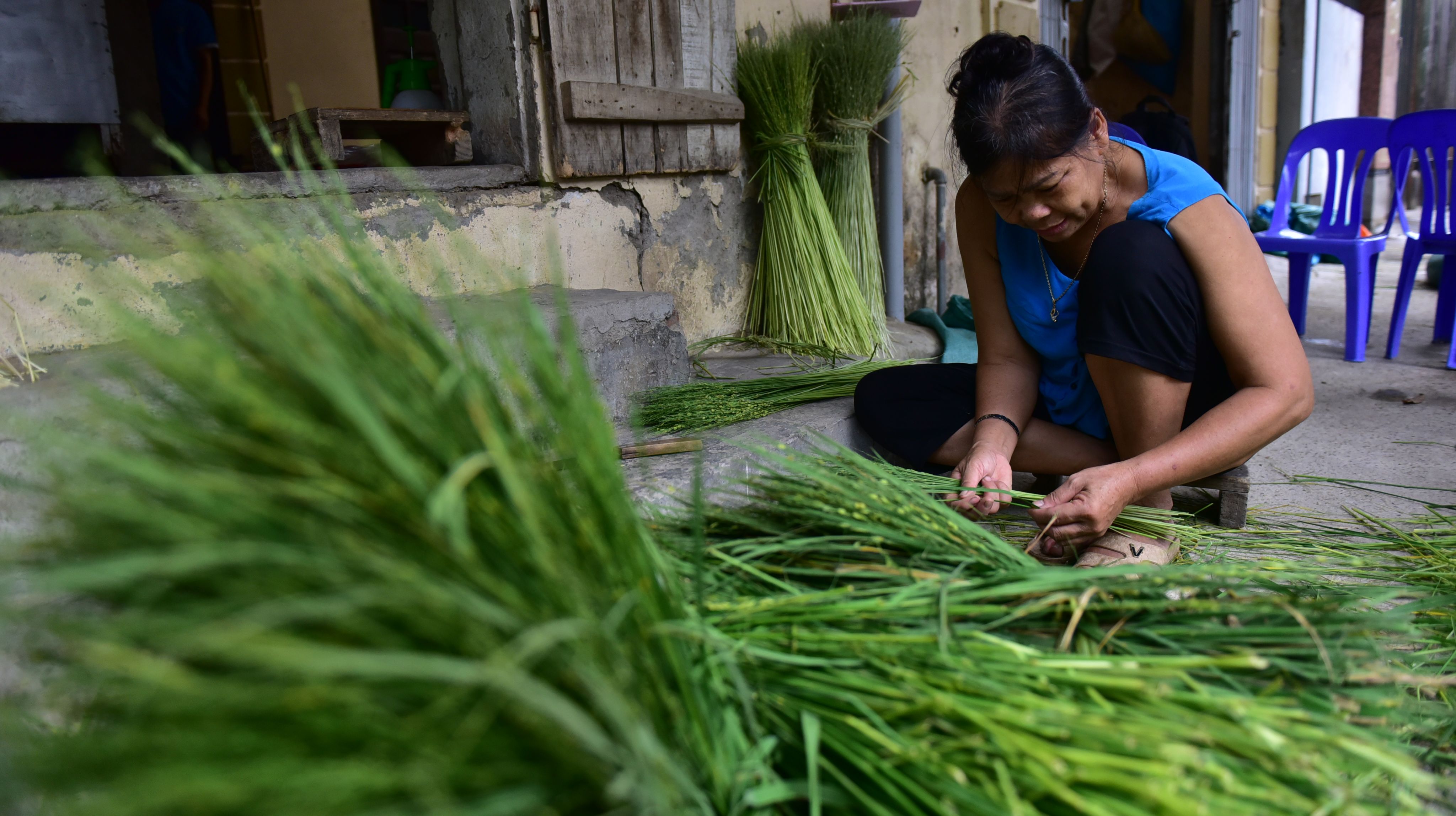
First, people will thresh and then remove the broken grains. Then roast the young rice while it is still fresh. To make a batch of green rice, it must go through many stages, but perhaps the roasting stage is considered the common secret of the craft villages. Because this is considered the most important stage that determines the quality of the batch of green rice. With their experience, the green rice maker will know when to roast it until it is cooked enough, keeping the delicious natural flavor. The next common point in the craft villages is that the green rice must be roasted with firewood, not coal or gas stoves. Using firewood makes it easy to adjust the heat, at the same time, the aroma of the wood smoke also makes a difference compared to using industrial fuels.
Ms. Ngo Thi Thu, whose family still makes Com Vong, shared: "Our elders passed down to us the experience of picking up 5 rice grains and placing them on a flat surface and rubbing them hard. If 3 grains have their shells removed and 2 grains have not been removed but have "wriggled" after the roasting and stirring process, then they have met the standards to be pounded into Com Vong."
The pounding, sieving and winnowing steps depend on the experience of the maker, and also on the immaturity of the rice used to make the green rice. After pounding, sieving and winnowing are done to remove chaff and impurities. Some batches are done three or four times, but sometimes it takes six or seven times to complete. The green rice must be pounded with a stone mortar to ensure the smoothness and elasticity of the green rice.
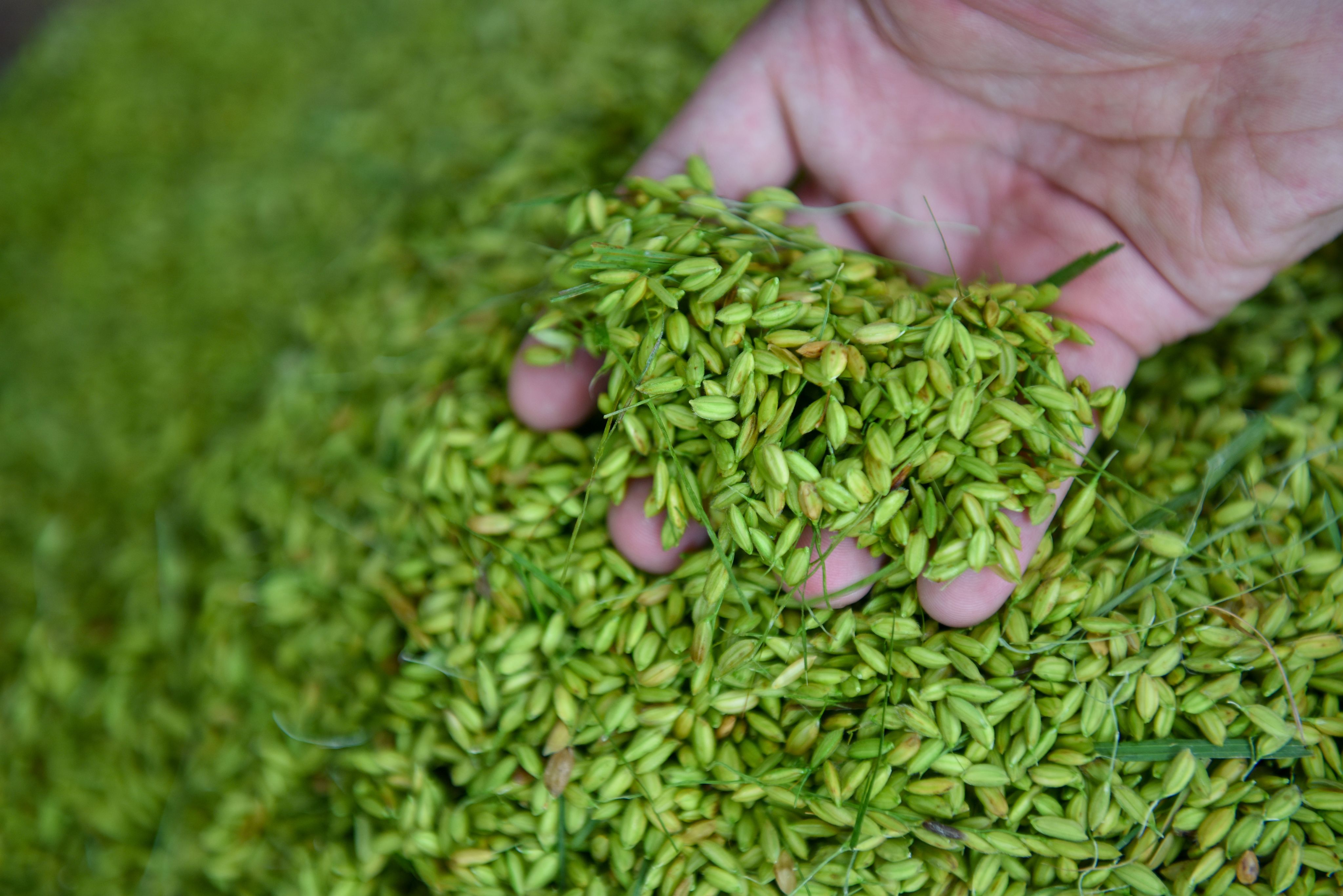
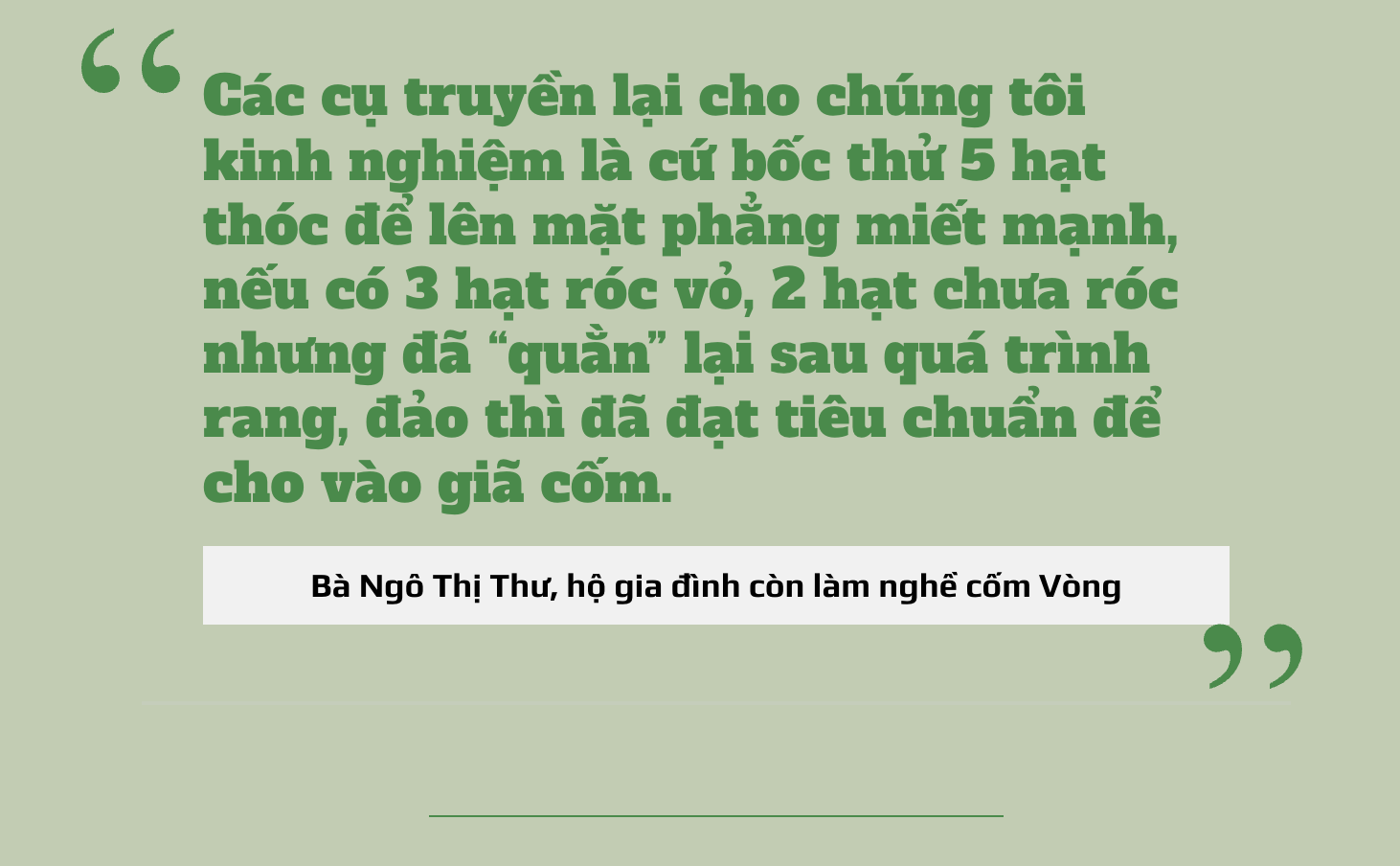
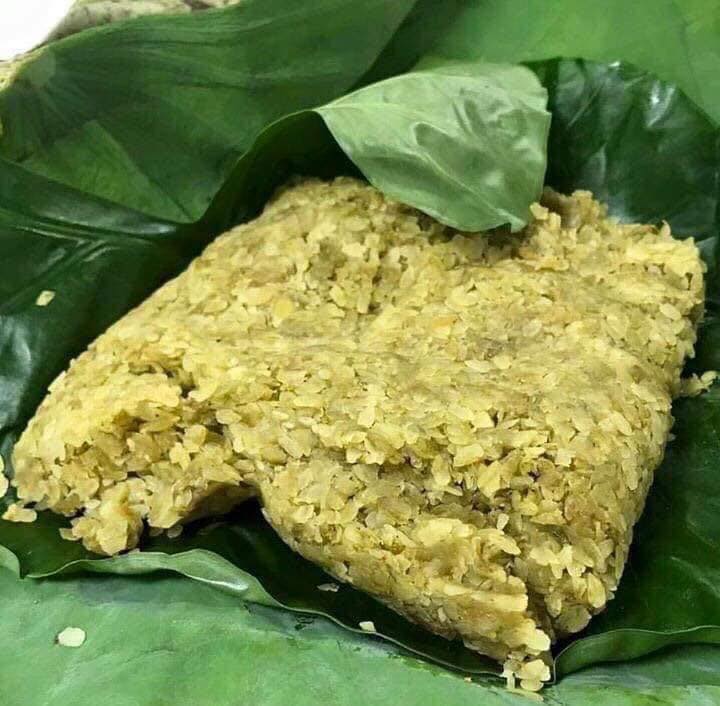

Vong villagers divide green rice into four types: green rice with tamarind leaves, green rice with dot, young green rice and old green rice. The most delicious green rice is green rice with tamarind leaves. It is called green rice with tamarind leaves because these are the green rice grains that fly out during the process of winnowing the green rice. Green rice with tamarind leaves is rare so it is almost never sold on the market. Green rice or “green rice with a nia head” is very young green rice. During the processing, the smallest and youngest rice grains will clump together. In each batch of green rice, people only collect about 2/10 of the weight of green rice. Even less, especially at the end of the season, it is even rarer because the rice grains are old. Young green rice is the main ingredient in each batch of green rice. And finally, old green rice is considered the least delicious of the four types of green rice, which means the green rice grains are formed from older rice grains. Some people also call this green rice. This type is often used to make green rice sausage.
Due to urbanization, Vong village now has fewer people making green rice flakes than before. Meanwhile, Me Tri green rice flakes have developed steadily and the green rice flakes craft in Me Tri has been listed as a National Intangible Cultural Heritage. From early morning, the green rice flakes village is bustling with the sound of machines roasting green rice flakes, the sound of pestles pounding green rice flakes and the fragrant smell of smoky stoves.

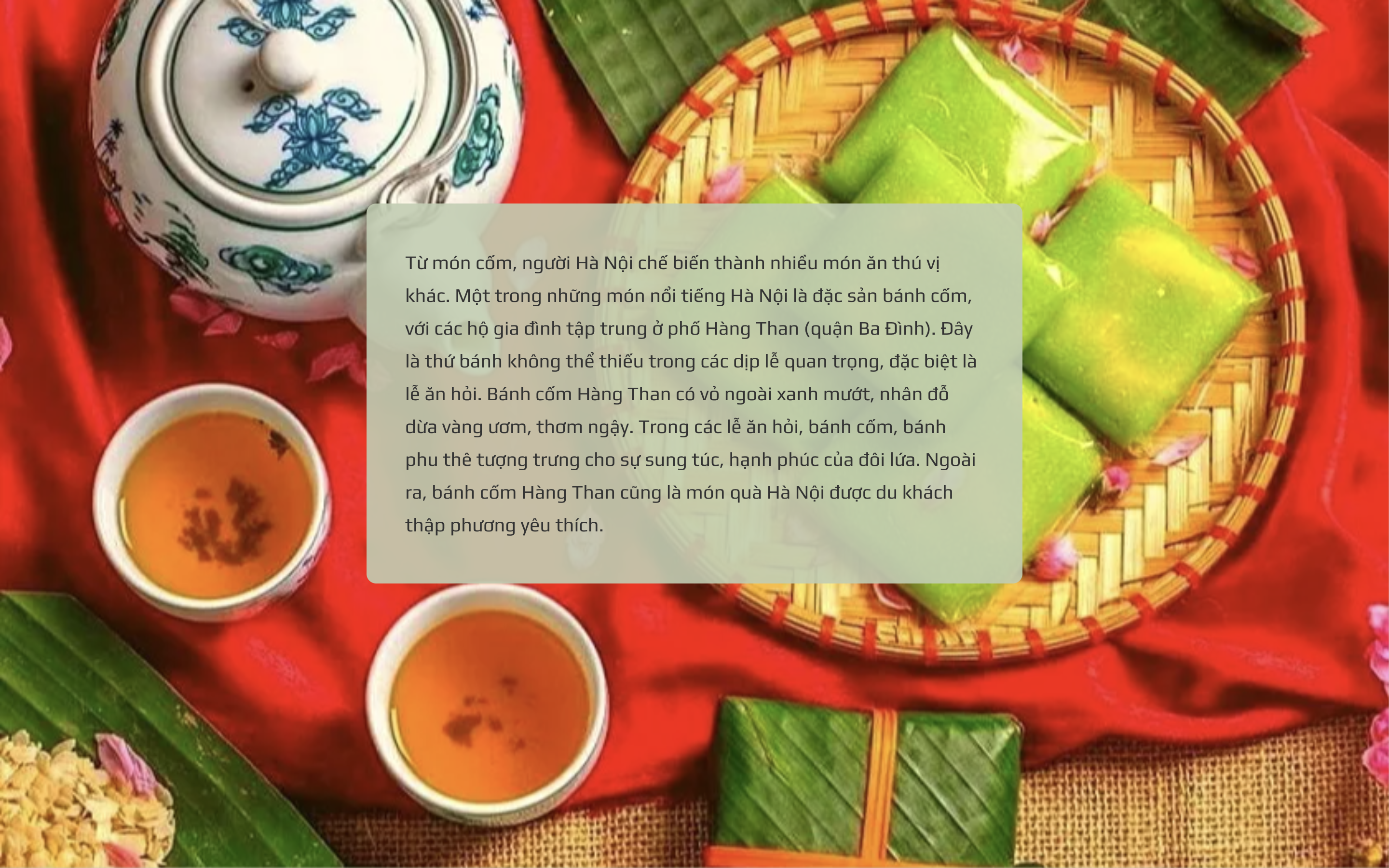
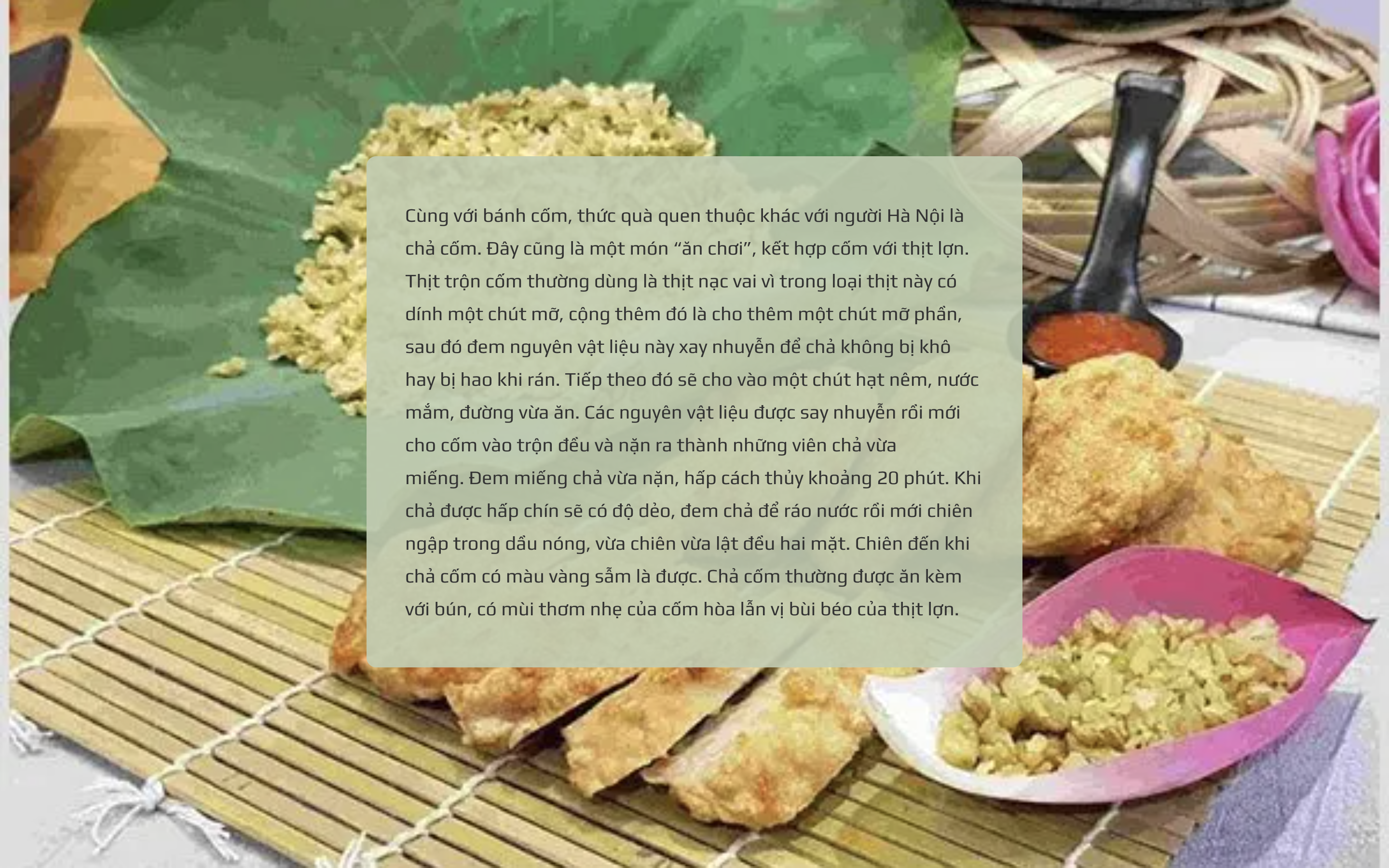
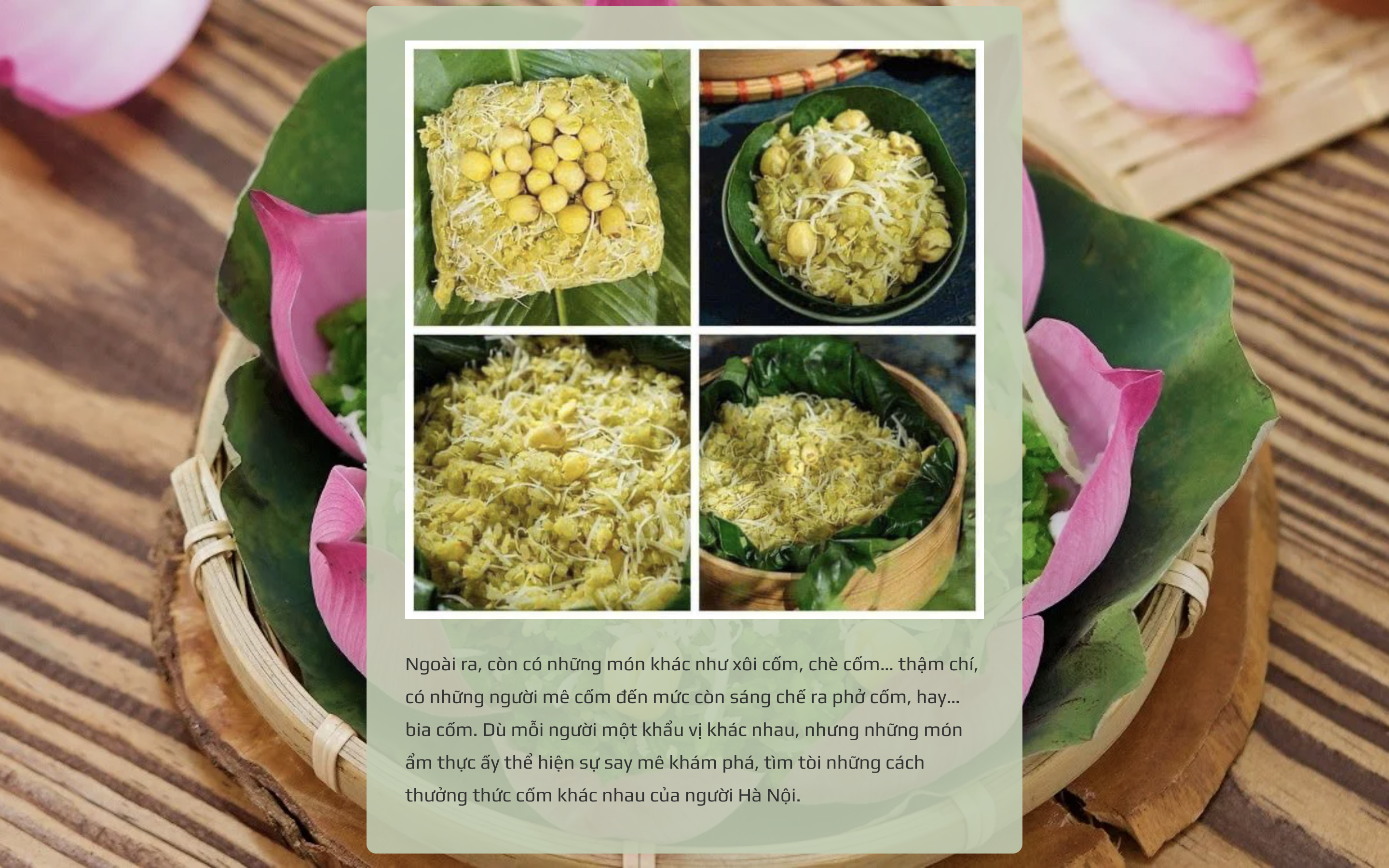

Nhandan.vn
Source: https://special.nhandan.vn/Com-thuc-qua-thanh-nha-cho-thu-Ha-Noi/index.html

![[Photo] Prime Minister Pham Minh Chinh chairs a meeting of the Steering Committee for key projects in the transport sector.](https://vphoto.vietnam.vn/thumb/1200x675/vietnam/resource/IMAGE/2025/5/10/0f4a774f29ce4699b015316413a1d09e)
![[Photo] General Secretary To Lam holds a brief meeting with Russian President Vladimir Putin](https://vphoto.vietnam.vn/thumb/1200x675/vietnam/resource/IMAGE/2025/5/10/bfaa3ffbc920467893367c80b68984c6)






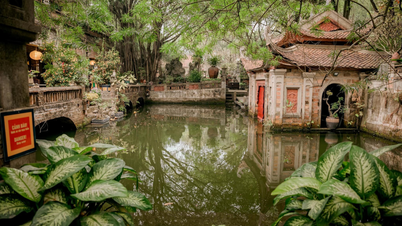



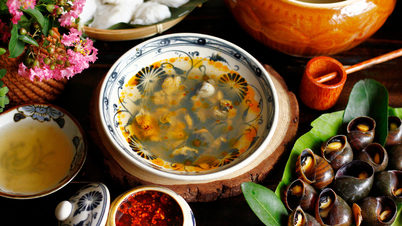





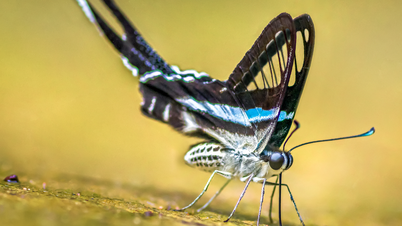








![[Photo] General Secretary To Lam holds a brief meeting with Russian President Vladimir Putin](https://vphoto.vietnam.vn/thumb/402x226/vietnam/resource/IMAGE/2025/5/10/bfaa3ffbc920467893367c80b68984c6)
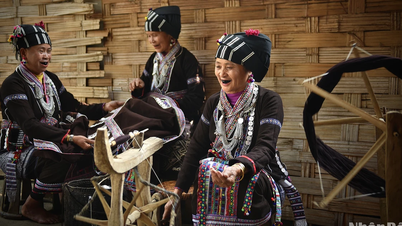
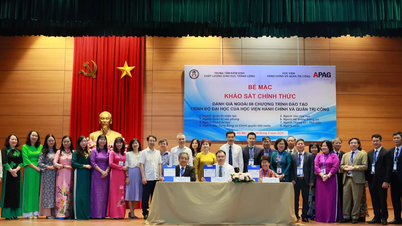


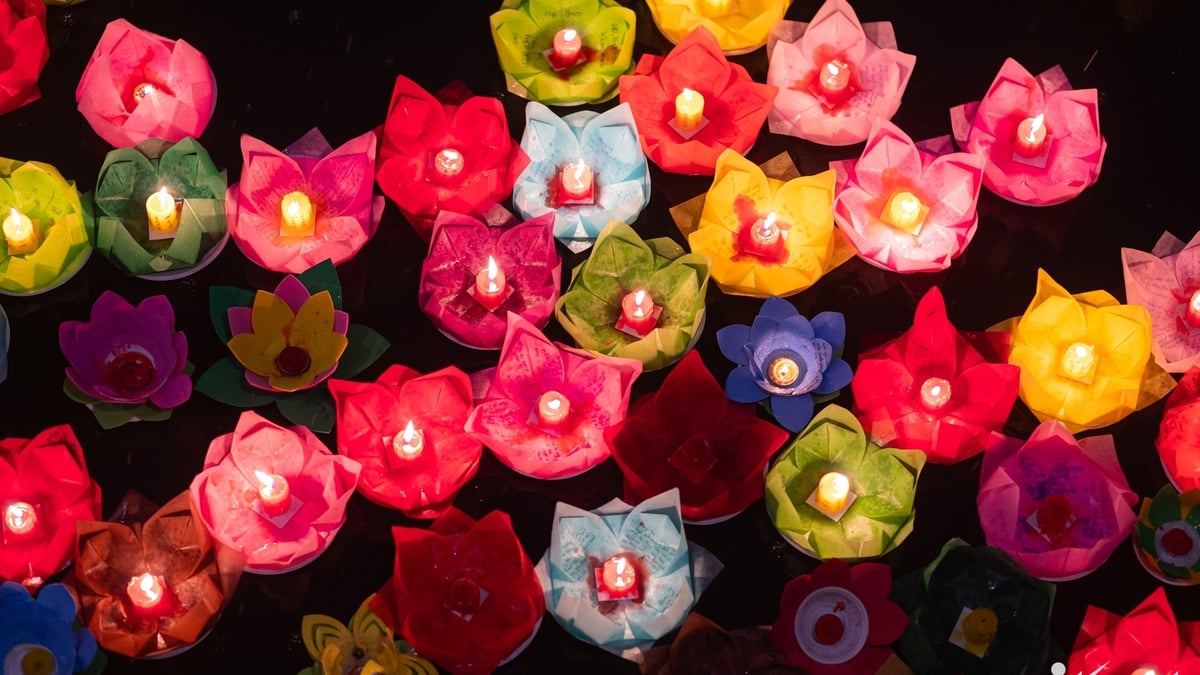
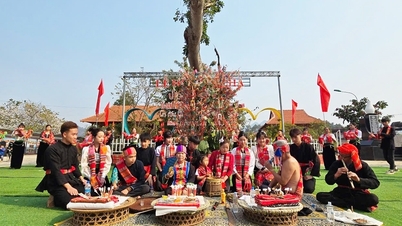







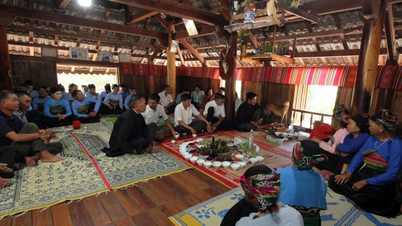



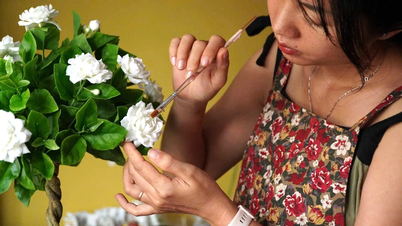


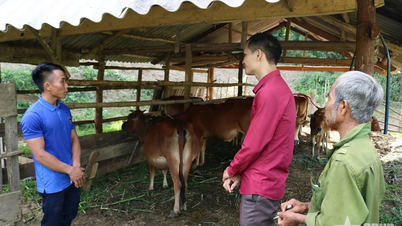



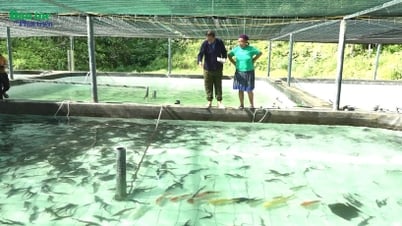


























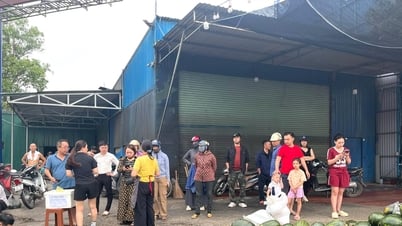









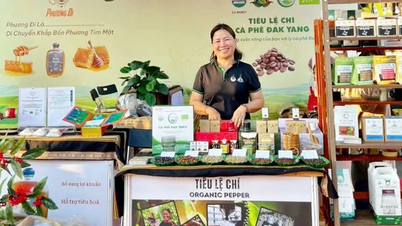


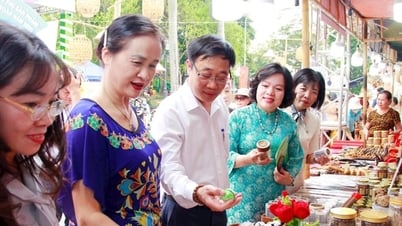



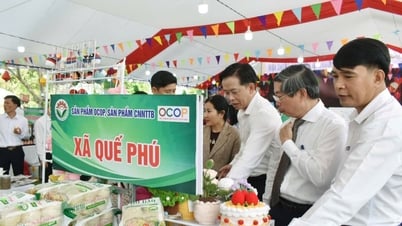

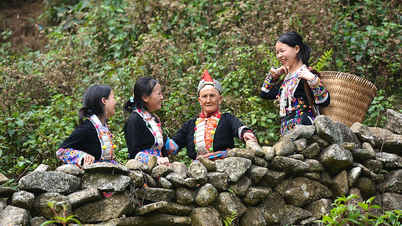
Comment (0)